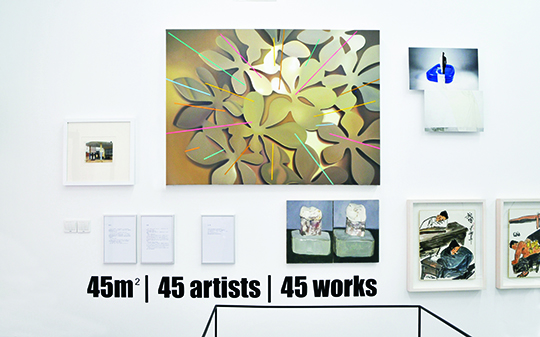SHANGHAI DEAl
| March 30, 2015 | Post In LEAP 31
TRANSLATION / Yvette Zhu
A new stage of institutional critique seeks to confront neoliberal market mechanisms. Because of fluctuations between global and regional systems, the circulation of capital around and within institutions is becoming less visible, resulting in critical clashes between artists and various components of the art system that are often more effective than ongoing institutional critique within the art museums system itself via exhibition discourse.

At the peak of the ART021 art fair in Shanghai, artist Shi Qing established his own “fair” within Radical Space, calling it Shanghai Deal. Shi invited 45 artists into his 45-square-meter exhibition space, where works and concepts were placed for sale in units of one square meter or one cubic meter. Artists could submit any types of proposal for work priced between RMB 600 to 10,000. While Shanghai Deal may look like another alternative sales platform for artists, it was actually—for Shi—a form of collective practice meant to “recognize artists as producers and work as a way of thinking.” Radical Space also provided third-party validation outside of the art fair system by applying value to artists’ time spent during the creative process and treating works according to a strict system of exchange value.
Picture an imaginary Shanghai Deal, full of artists’ unfinished experiments resembling a studio, in sharp contrast to art fair work accompanied by flattering language and narrative. Artist Ma Qiusha’s proposal determined that anyone could have one of her works—a bottled plant in a box—for a price equivalent to 3% to 5% of any other purchases made at Shanghai Deal, making her work dependent on other transactions. Of course, many artists also produced more conventional work framed as if it were in a proper art fair.

Combining production, display, and commerce in a single arena already amounts to a critique of the idealization of art as a market product. On some level, unfinished products imply that there is a distance between the production system and its final product. But the organization of the event also reveals certain misunderstandings about the art fair system: Shi Qing ultimately eliminated his original strategy of charging a 30% commission, which distinguished him from other mobile and online gallery marketing strategies popular at the moment. With this practical approach, Shanghai Deal was able to experiment with a trading system for art. Although this was only a beginning, the project presented a space for artists to rethink art fairs—to reflect on the forms of their works as products, even if a certain sense of idealism masks a series of misapprehensions and misunderstandings.

